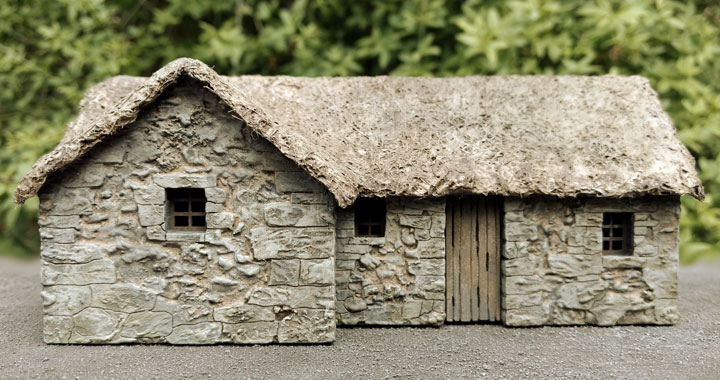
WHY ADD TEXTURE?
SLD models are designed not to need added texture. However, all the models can be enhanced by painting them. Adding even small amounts of texture can provide some nice highlights for the paint to pick up, adding depth to flat surfaces.
Sometimes the surface of fibreboard (MDF) can look too flat. Adding gloop is a good and simple way of adding texture to your models and personalising them at the same time.
WHAT IS GLOOP?
Gloop. What is it?
It’s up to you what you use as gloop, and it can be a single thing or a mixture. For a rough surface, it is quite usual to have fine sand in the mix, although not all textures are necessarily rough. More on that later.
ROUGH TEXTURES
Grout filler is a usual gloop, and it has sand in it – and cement! It’s a Portland cement based product. In the mix are sand and water. Tile grout is readily available in a variety of colours. Brilliant white is best avoided. Tile grout is intended as a gap filler between tiles. Other household fillers, such as small hole fillers, are normally a type of plaster (and brilliant white) and are designed to allow a smooth finish.
Modellers tend to find grout low in adhesive qualities, which is understandable as it’s a filler not an adhesive. It’s quite usual to mix PVA glue with grout. For a rough sandy texture, though, too much glue can give the gloop too smooth a finish.
However, glue really does help in applying gloop to fibreboard surfaces. MDF is a material made of a mix of wood fibres, resin and wax. It stands to reason that the resin and wax will resist water-based gloops (and paint).
Nevertheless, there is a simple solution for sandy gloop ending up too smooth. Wait until the gloop is very nearly dry and use a simple tool, like a cocktail stick or toothpick, to rough up any smooth patches. The ‘lift off’ technique is also useful. Again, wait till the gloop is very nearly dry and gently touch the surface. Lift the tool away and the gloop should pull away with it, leaving a rough surface.
NON-TEXTURED TEXTURE?
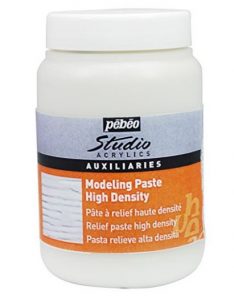 As well as the afore mentioned plaster fillers, a good and convenient filler for smooth textures is artists’ acrylic medium, or modelling paste. This is available in a variety of textures, sandy included. But it is perhaps more expensive than household fillers. However, it comes into its own for certain jobs. It’s as simple to apply as acrylic paint, as it’s just paint without pigment – although usually thicker – with the same convenient drying time.
As well as the afore mentioned plaster fillers, a good and convenient filler for smooth textures is artists’ acrylic medium, or modelling paste. This is available in a variety of textures, sandy included. But it is perhaps more expensive than household fillers. However, it comes into its own for certain jobs. It’s as simple to apply as acrylic paint, as it’s just paint without pigment – although usually thicker – with the same convenient drying time.
Small models whose detail might be overwhelmed by sandy textured paste can be enhanced with a thin spread of non-textured acrylic medium. A non-textured spread is also useful for covering over unsightly joins.
The walls of the 10mm saltbox house model were textured with a smooth acrylic paste applied with a wooden cocktail stick (tooth pick). Accentuating the horizontal strokes, provided some nice highlights for the paint to pick up.
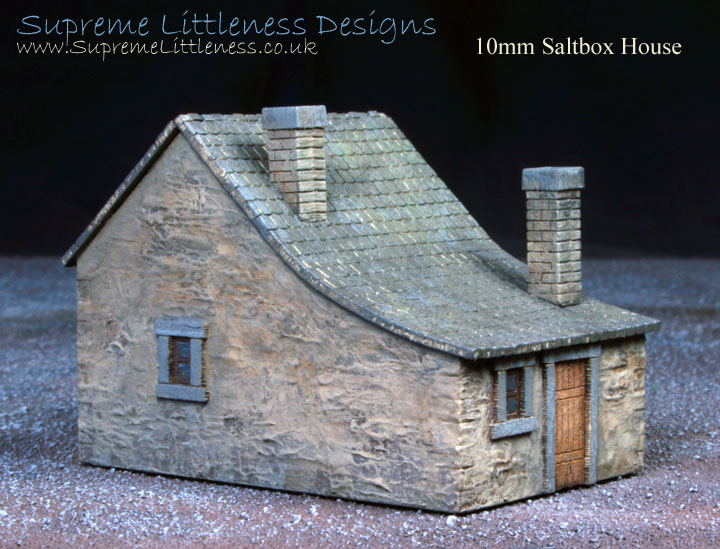

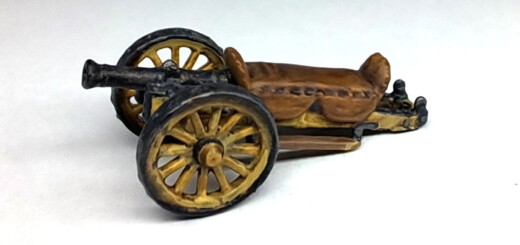
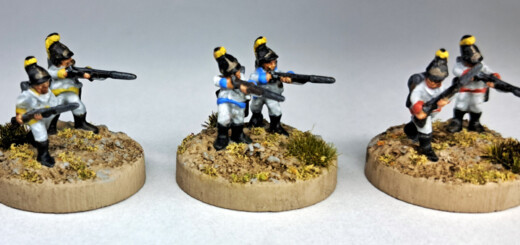

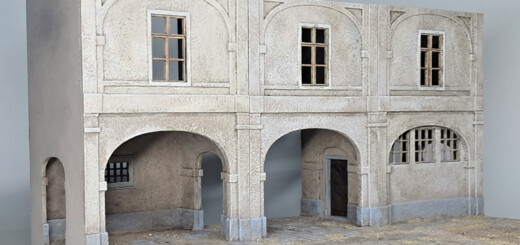
RECENT COMMENTS